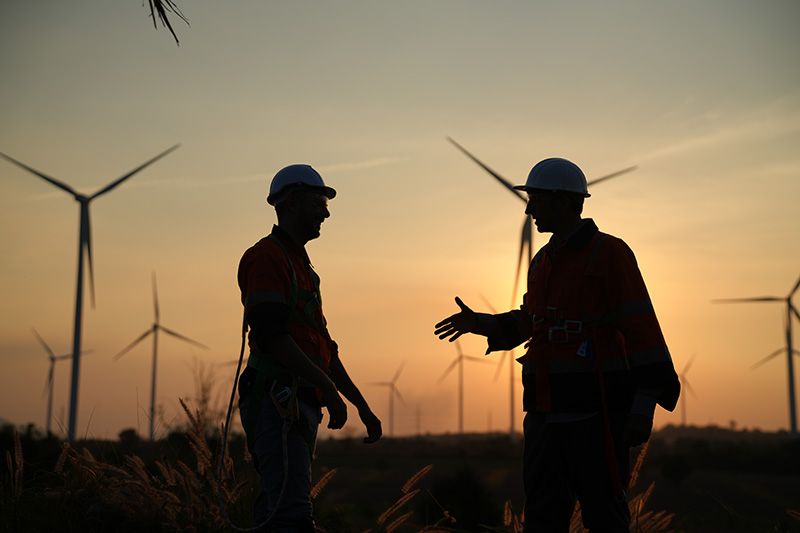
“India is committed to the UN Framework for Climate Change process. That is why, from this stage, I propose to host the COP33 Summit in India in 2028,” declared our beloved PM Modi Ji during the first session of the conference, the World Climate Action Summit at COP28. In a rare show of special gesture, he was seated on the podium alongside COP28 President Sultan Ahmed al-Jaber and the UNFCCC Executive Secretary. He was given the honor of speaking at the ceremonial opening of COP28. Yet, India, along with China, did not sign the Green Pledge, thus disappointing many.
The recent COP28 summit in Dubai witnessed a significant moment in the global effort to combat climate change with the introduction of the Global Renewables and Energy Efficiency Pledge or in short GREEN PLEDGE. The pledge, aimed at tripling global renewable energy capacity and doubling energy efficiency by 2030, was backed by 118 countries. However, India’s decision not to sign the pledge, despite its earlier commitment as part of its G20 presidency, has raised eyebrows and prompted a closer examination of the factors behind this decision.
Contextualizing India’s Energy Landscape
India’s energy sector is characterized by rapid growth, with an annual demand increase of about 8%. The country has set an ambitious target to expand its renewable energy capacity to 450GW by 2030, up from the current level of 130GW. This target is part of India’s broader strategy to transition towards more sustainable energy sources. However, the country’s overwhelming reliance on coal and domestic financing for its energy transition presents a significant challenge to fully embracing renewable energy.
Analyzing India’s Reluctance
Coal Dependency: India’s energy sector is heavily reliant on coal, which accounts for a substantial portion of its energy production. The country’s vast coal reserves have historically been a cheap and reliable energy source, supporting its industrial growth and economic development. Moving away from coal, therefore, represents not just a technological shift but also a significant economic and social challenge.
Financial Constraints: The transition to renewable energy requires massive investments. India’s reliance on domestic financing for its energy transition highlights the need for substantial financial resources, which are not readily available. The pledge to triple renewable energy capacity and double energy efficiency involves costs that may not align with India’s current economic and financial priorities.
Negotiation Dynamics: India’s decision may also be influenced by its stance in ongoing negotiations under the UN climate framework. The language of the pledge, particularly regarding the phase-down of unabated coal power, poses a challenge for India, which is seeking a balanced approach that aligns with its national interests and developmental goals.
Global vs. National Interests: The pledge, while globally significant, might not completely align with India’s national energy and economic strategies. India’s energy policy is driven by a need to balance environmental concerns with economic growth and energy security. The country may perceive the pledge as potentially limiting its flexibility to navigate this balance.
Technological and Infrastructure Challenges: The shift to renewable energy is not just about generating power but also involves building the necessary infrastructure for storage and distribution. India faces significant technological and infrastructural hurdles in rapidly scaling up its renewable energy capacity.

Implications of India’s Decision
India’s decision not to sign the pledge has both domestic and international implications:
Domestic Energy Policy: It reflects the complexities of India’s energy policy, which must juggle economic growth, energy security, and environmental sustainability. The decision may slow down the pace of India’s transition to renewable energy, given the continued reliance on coal.
International Negotiations: On the international front, India’s stance could influence the dynamics of climate negotiations. As a major global player and a significant emitter, India’s decisions impact global efforts to combat climate change.
Global Leadership Role: India’s role as the G20 president and a key player in global climate discussions places it in a position of leadership. Its reluctance to join the pledge might raise questions about its commitment to global climate goals, despite its ambitious national targets.
Potential for Future Collaboration: India’s decision might not be a flat-out rejection but a strategic move to negotiate terms that are more aligned with its national interests. This opens avenues for future collaboration and support, especially in terms of financial and technological assistance from developed nations.

Way Forward
For India, the path forward involves balancing its developmental needs with its climate commitments. This will require:
Strategic Investments: India needs to strategically invest in renewable energy, focusing on areas that offer the highest return in terms of energy output and efficiency.
International Cooperation: Engaging in international collaborations for technological and financial support is crucial. This includes partnerships for investment in renewable energy infrastructure and research and development in energy-efficient technologies.
Policy Integration: Integrating environmental sustainability with economic policies will be key. Policies that incentivize renewable energy adoption, support research and innovation, and provide a conducive environment for renewable energy investments are needed.
Public-Private Partnerships: Leveraging public-private partnerships can mobilize resources and expertise necessary for the energy transition.
Community Engagement: Educating and engaging communities in the transition process ensures public support and smooth implementation of renewable energy projects.
Concluding Remarks
India’s decision not to sign the Global Renewables and Energy Efficiency Pledge at COP28 underscores the complexities nations face in balancing national interests with global climate commitments. While the decision may be seen as a setback in the short term, it opens up discussions on how countries like India can be supported in their transition to a sustainable energy future. The path forward for India is one of strategic planning, international cooperation, and policy innovation, ensuring its growth is both sustainable and inclusive.
Prof. Dr. Prahlada N. B
3 December 2023
Chitradurga.

















Leave a reply